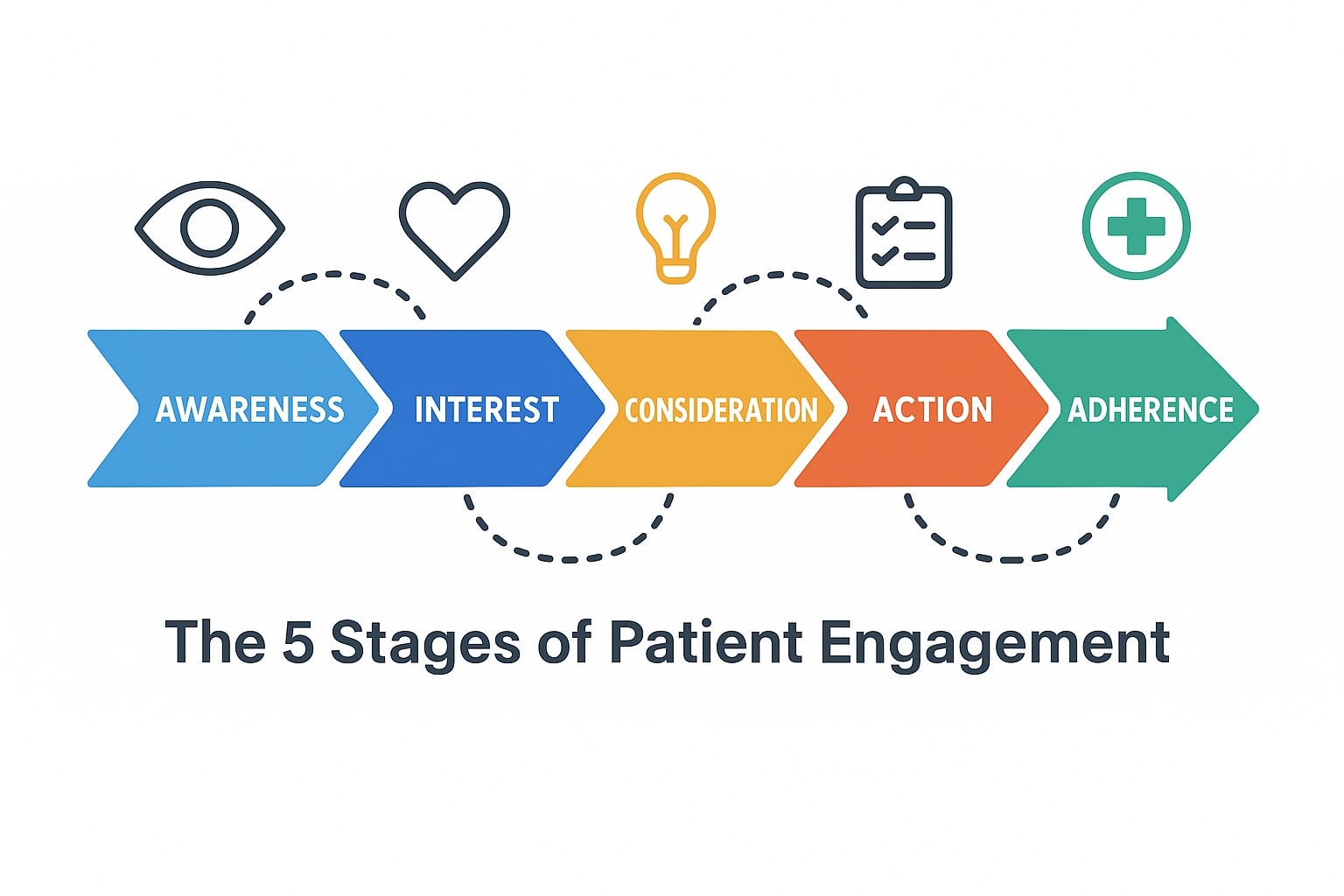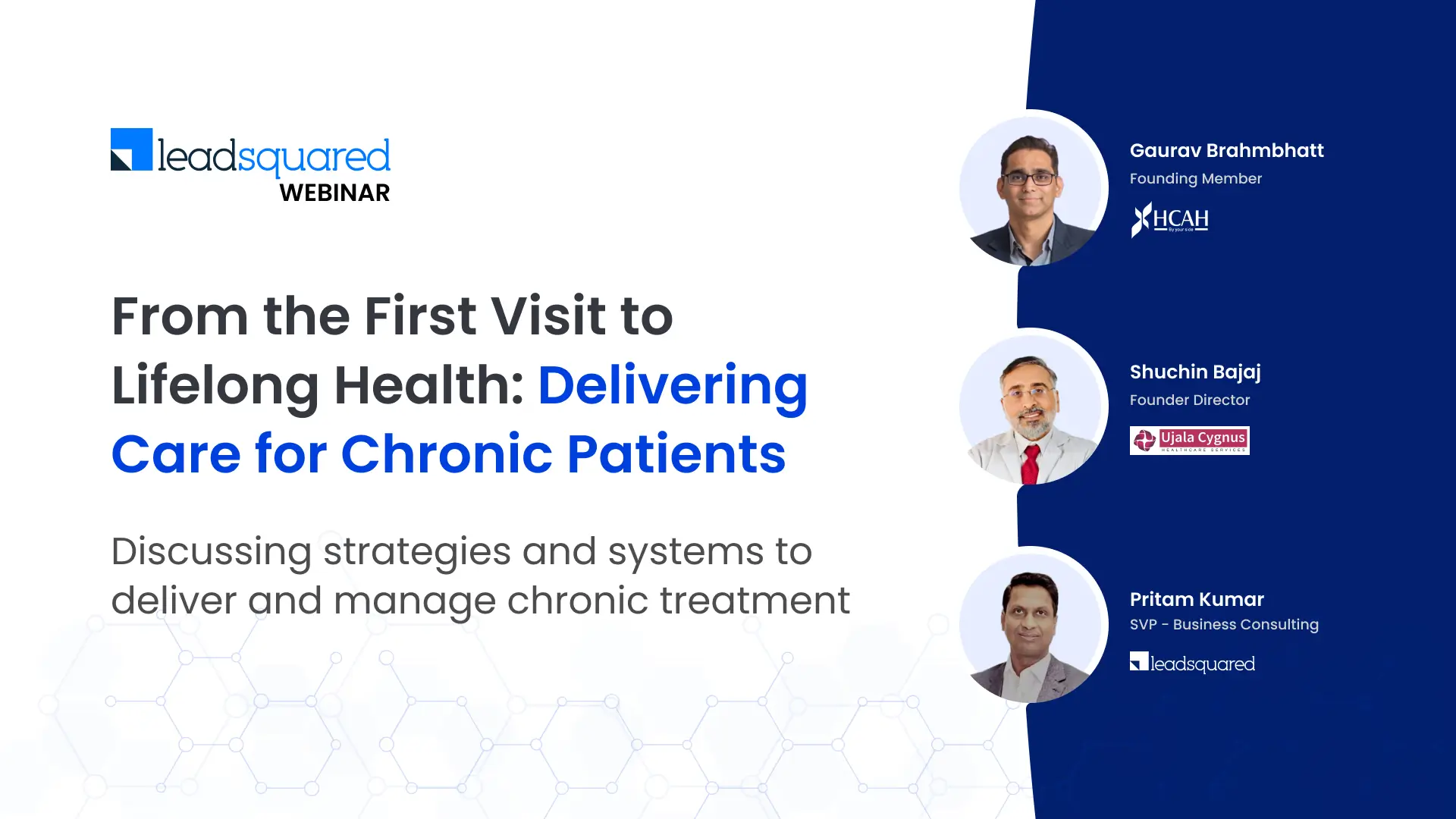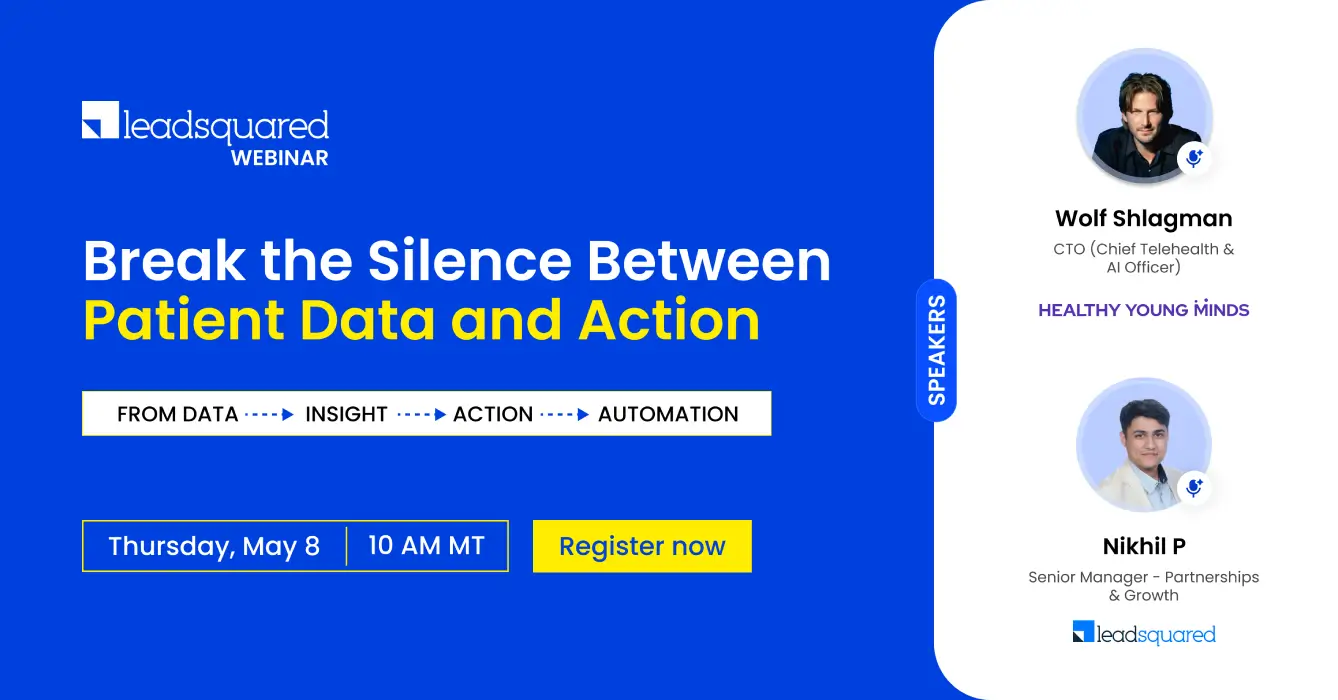Doctors talked and patients listened — that was the norm for decades. Healthcare was something that happened to patients, and they were more or less okay with it.
But this model is quickly losing its relevance. We know today patients do better when they’re in the driver’s seat, holding the wheels to their care. In fact, being engaged in one’s own health has proven to make a huge difference. Studies show that strong patient engagement strategies improve clinical outcomes by as much as 21%. Which means more satisfied patients who are more likely to stick around with your practice and recommend it to others.
But what does it mean to engage a patient?
Simply put, it concerns designing care around the person, rather than just their condition.
In this article, we break down how to build a patient engagement program that makes that kind of care possible. And in doing so, help your practice run smoother and deliver care that pays back.
Why Patient Engagement Is Evolving
The idea of patient engagement has been building up over time, thanks to a few big shifts in how healthcare works.
1. COVID changed everything
The pandemic pushed digital health forward by years. Telehealth became normal. So did remote monitoring. Also, it made people more health-aware and more willing to take ownership of their wellbeing.
2. Tech made it easier
Wearables, apps, patient portals…technology has made health tracking and connecting with providers much simpler. Patients don’t have to wait for annual checkups to take care of themself. Now, they can monitor trends, get alerts, and proceed with intention to get checked up.
3. The shift to value-based care
Providers are now more invested in keeping patients involved throughout their care journey. Because they have figured that an engaged patient is more likely to follow through on treatment and recover better.
4. Patients expect more “now”
People no longer just “go to the doctor”, they weigh in their options to take the right decisions. Healthcare is becoming more consumer-like, and with that comes higher expectations around involvement and communication.
In short, deliberate patient engagement is rising because it has emerged conclusively as a useful measure for both patients and providers.
Why Patient Engagement Matters: Key Benefits

When patients are engaged in their care, everyone wins. Here’s how:
1. Better health outcomes
As we saw, engaged patients lead to better health outcomes as they are more likely to take their meds and stick to care plans. This means fewer complications and faster recoveries.
2. Better patient satisfaction and retention
Engagement builds trust, and trust goes a long way in keeping patients loyal to your practice, who then might also refer their friends and family to your care.
3. Lower healthcare costs
Preventive care and early interventions work better when patients are active participants. In other words, proper patient engagement along this direction cuts down costs incurred from emergency visits, readmissions and so on.
4. Increased operational efficiency
Engaged patients tend to show up on time, cancel their appointments less, and navigate systems (like portals and appointment scheduling tools) more smoothly. This eases pressure on staff and reduces admin chaos.
Stages & Pillars of Patient Engagement
The 5 stages of patient engagement

Patient engagement is not an on/off switch. It’s a progression that can be split into 5 stages. Here’s a simple breakdown of these stages:
1. Awareness
This is when a patient becomes conscious or is made aware of their condition and the importance of preventive care. Here they realize the need to be actively involved in their care.
2. Interest
Once aware, patients start to seek more information. They may read about their condition or explore treatment options.
3. Consideration
The patient starts weighing their choices. They might compare treatment options with the doctor or consider lifestyle changes. It’s the early stage of shared decision-making.
4. Action
This is where active engagement begins. The patient starts following care plans, making appointments or taking meds as prescribed.
5. Adherence
The final stage is where patients maintain what has been started by continuing healthy behaviors long-term. It requires ongoing support, and patients in this stage often become advocates for their own health.
The Four Pillars of Patient Engagement
The five stages describe how patients engage; the pillars are what support them along the way. Let’s break them down:
1. Inclusiveness
True engagement shouldn’t just reach a select few. It should be inclusive. This means offering materials in multiple formats, using plain language, and designing systems that meet people where they are, in all their diversity.
2. Support
Patients need constant support. This includes providing them with tools, education, coordinated care and more. The goal is to maximize the benefit of the process by making it easier to follow.
3. Shared decision-making
As we know, the more a patient is actively involved in the decision-making process, the better the outcome. You can track concerns regarding shared decision-making through patient feedback.
4. Co-building
This concerns patients and providers collaborating to navigate care plans. Co-building makes patients more invested in their care – whether it’s setting goals or choosing treatments.
Key measures that play a role in patient engagement
1. Patient activation
Patient activation measures a patient’s knowledge, skills, and confidence in managing their health. High activation score means they’re more likely to follow care plans and take preventive action. Tools like the Patient Activation Measure (PAM) help quantify this.
2. Health literacy
Engagement stalls when patients don’t understand their conditions or what’s expected of them. To make things clear and actionable it’s important to assess health literacy and tailor communication to fit people’s level of understanding.
3. Shared decision-making
As we know, the more a patient is actively involved in the decision-making process, the better the outcome. You can track concerns regarding shared decision-making through patient feedback.
4. Patient-Provider Communication
Good communication mediates everything in patient engagement. Regular surveys and feedback loops can help gauge whether your interactions are perceived meaningful or just transactional.
Design Your Patient Engagement Program
A patient engagement program puts patients at the center and so it’s to be designed around their needs and expectations. Here’s how to do it, step by step:
1. Know Your Patients
Before you roll out any fancy tech or workflows, take time to investigate who your patients are, their pain points and their tech preferences.
- Segment your patient population — age, conditions, tech-savviness, etc.
- Understand their expectations — some want in-depth conversations; others want quick, clear instructions.
- Gather feedback through short surveys online or during visits.
The more you know, the more personal your patient engagement strategy can be.
2. Map the Patient Experience and Identify Key Touchpoints
You can’t improve what you don’t fully understand. This is why you need to map the patient’s experience all through their care journey.
Every interaction a patient has with your practice is a touchpoint. Each either builds trust or chips away at it. Make each step feel clear and effortless to build this trust. Here’s how to get started:
- Map the full patient journey. This begins with them discovering your practice → booking an appointment → arriving at the clinic → consultation → follow-up, and so forth. Include both digital and in-person experiences.
- Spot the friction. Identify where delays happen and why patients drop off.
- Highlight moments that matter. Instances of such moments would be when a patient is nervous before a procedure, waiting for test results, or confused about billing. These are your high-impact engagement opportunities to gain their trust.
3. Develop your communication strategies
There is no patient engagement without proper communication.
Know when to connect with patients
Think through key moments when patients need to hear from you. That could be:
- Before their first visit
- After a procedure
- When it’s time to schedule routine screenings
Send messages during these moments to remind them what needs to be done.
Choose the right mix of channels
People are different. Some prefer texts while others read emails. A few still appreciate a personal phone call. And for longer content — educational resources, FAQs, appointment prep — patient portals and websites can be really effective.
Whatever medium you may use, ensure you never leave patients wondering “What’s next?” or “Did they forget about me?” Regular touchpoints across the channels create a sense of care and presence.
Keep it personal
As long as you abide by the laws of HIPAA, try using patient names, reference past visits, and tailor the message when possible to make your efforts personalized. Automated systems can help with this, especially when integrated with a HIPAA compliant healthcare CRM that tracks patient history and preferences.
4. Use the Right Tools to Power Engagement
You need the right systems to support patients.
Patient Portals
Most modern practices now offer some version of a patient portal. These portals give patients 24/7 access to their health records, test results, and other relevant data. Portals also allow patients to book or manage appointments without calling the practice’s front desk.
But all these features would be of no good if patients don’t use them due to them being clunky or hard to navigate. So having a portal is step one. Making it user-friendly is the next step.
Healthcare CRMs
A Healthcare CRM (like ours at LeadSquared) takes things much further. It helps track all your interaction with a patient across channels. Everything from initial inquiry to ongoing care.
Here’s how a CRM aids in patient engagement:
- Communication channels – A CRM allows you to send appointment reminders, wellness tips, and more through multiple channels including text messages, emails, calls and more. It can also help you tailor the messages based on a patient’s health history and preferences.
- Appointment scheduling – This feature lets patients schedule appointments on their own through easy-to-use portals. This means they no longer have to call the doctor’s office to find a date that works for both them and the doctor.
- Patient portals – Apart from scheduling appointments, portals also help store patient’s data relevant to their care. This includes prescription notes, doctor’s comments and so on. They can also be used to share healthcare resources.
- Send automated reminders – You can set up automated nudges when a follow-up is due or a patient hasn’t been heard from in a while.
- Analytics – To improve your patient engagement program, you need to figure out what messages get the most response or which patients are most at risk of dropping off. A CRM gives you access to such info through detailed reports and analytics.
Lastly, they can also integrate with your EHR, allowing you to access stored patient data and update it automatically from the CRM.
Other tools worth considering:
- Mobile health apps – Great for tracking vitals, managing chronic conditions, or delivering education.
- Kiosks and tablets in waiting rooms – These help patients update info, check in, or complete forms digitally.
- Telehealth platforms – Essential for remote care and follow-ups.
5. Track the right metrics

You’ve got to know what’s working, if you’re investing time and resources into your patient engagement program.
Here are some key engagement metrics that matter:
1. Appointment no-show rates
If patients are frequently missing visits, there’s likely a communication or convenience problem. Track this across locations or providers to spot patterns.
2. Hospital readmission rates
Unexpected returns can mean gaps in care coordination and post-discharge communication.
3. Patient portal usage
Track if people are actually logging in, or say, messaging their providers through your portal. It might need some work to be made user-friendly if the numbers are too low.
4. Response rates to messages
Examine whether patients are interacting with the messages you send them. Be it reminders, surveys, or care instructions.
5. Patient satisfaction (via Surveys or NPS)
Simple post-visit surveys through feedback forms or Net Promoter Scores can tell you a lot about how people feel about your services.
6. Engagement over time
Look at patient engagement as a long game. Are patients continuing to interact with your practice or are they going silent after one visit?
A good Healthcare CRM helps you monitor all this.
6. Educate patients for their active participation
Patient education involves giving people just what they need to feel informed and confident.
Here’s how healthcare providers can make that happen:
- Make information accessible:
Use simple language. Give bite-sized guidance tailored to the patient’s condition. This could be through digital handouts, short videos, or portal-based updates.
- Share education resources:
Use your website or social media handles to share useful health related educational resources that anyone can access.
- Create space for questions and dialogue:
Encourage questions from patients’ side to keep them engaged.
Case Study: How a Small Clinic Improved Patient Engagement with a Patient Advisory Committee
First Street Family Health Center in Colorado had been trying to improve patient satisfaction and safety for years, without seeing much progress. That changed when they introduced a Patient Advisory Committee (PAC), bringing together patients, family members, staff, and doctors to work as a team on improving care.
The results were pretty remarkable.
The PAC helped patients better understand their role in managing their own health, which led to more active involvement and better health outcomes. It also gave patients a voice in how the clinic operates — leading to real improvements in communication, access, and overall satisfaction. Complaints dropped, provider satisfaction went up, and patients even became advocates for the practice, educating others on how to take charge of their care.
This simple but thoughtful approach shows how involving patients directly in shaping their care experience can drive better outcomes for both patients as well as the practice.
Looking Ahead: Future Trends in Patient Engagement
The future is bright for healthcare. By 2026, it’s projected that AI could save the U.S. healthcare system a staggering $150 billion a year, largely by helping providers move from reactive care to proactive health management.
Healthcare organizations are catching on quickly. Over three-quarters are already using or planning to adopt AI in some form. At the same time, the demand for better patient engagement tools is soaring. In fact, the global market for these solutions is set to more than double by 2030.
Why?
We live in a fast-paced world, where our expectations are met just as fast by the technology that surrounds us. You can order your dinner, find a new show to binge, or schedule a ride to your mother’s place at the flick of a finger. And so we know, platforms like Amazon, Netflix or Uber have raised the bar for how easy it is to find the services we seek.
As a result, consumer expectations have changed across the board. And the healthcare world is no exception.
So, patients now want the same ease and personalization from healthcare that they get from everywhere else.
Now, how is AI actually helping improve patient engagement?
- 24/7 Virtual Assistants: AI chatbots are available around the clock, guiding patients with tailored health advice, and making access to care faster and easier.
- Virtual Nursing Support: These tools use AI to handle routine tasks, which frees up nurses to focus on more meaningful patient interactions. This boosts care quality as well as help reduce burnout.
- Smarter Patient Portals: Patient portals can now use AI to send reminders, book appointments, and keep patients engaged in their own health with less friction.
- Proactive risk detection: AI models, such as those from Google Health, can flag risks earlier than ever. In the case of mammograms, their AI has even outperformed human radiologists in accuracy.
- Better staff scheduling: AI also plays a behind-the-scenes role by optimizing workflows, which improves scheduling, reduces wait times, and creates a smoother care experience overall.
Despite all its benefits, we wouldn’t want AI to replace the human element in care. But we would certainly want it to help us strengthen our efforts, especially at scale.
Conclusion
We saw why patient engagement matters in today’s world. The more involved a patient is in their care, the better the outcome not just for them but for practices as well. Trust breeds loyalty that in turn leads to growth.
But we also know engagement takes effort. It demands structure (the patient engagement program we discussed) and tools that help keep everything in sync. A HIPAA compliant healthcare CRM like LeadSquared is the one of the best fills for the tool part. It helps you track how patients interact with your practice and personalize your outreach. You can also automate communication, employ patient portals and more with a quality CRM.
If you wish to know more about LeadSquared, feel free to book a quick demo.
FAQs
What is a patient engagement program?
A patient engagement program is a structured approach to involving patients more actively in their own care. It combines education, communication, and personalized outreach to help patients make informed decisions about their treatment. It’s about building a two-way relationship by partnering with patients.
Why is patient engagement important in healthcare today?
Healthcare has become more collaborative. Patients are no longer passive recipients. They want to be informed and involved in their care. Strong engagement improves satisfaction, supports better outcomes, and reduces costs by encouraging proactive care and early intervention.
What makes a patient engagement program effective?
The most effective programs are personalized and easy to access. They anticipate patient needs and offer resources that are relevant and understandable.
What tools support patient engagement programs?
Typically, practices use a combination of CRM systems, patient portals, messaging platforms (like text messages or WhatsApp), and education tools. The key is integration — these tools should work together to make it easier to connect with patients.
How does patient engagement impact health outcomes?
Engaged patients are more likely to follow treatment plans and seek help at the right time. This leads to improved overall outcomes. Many studies back this, showing measurable improvements in both clinical and operational performance.
Can smaller practices benefit from patient engagement programs?
Absolutely. In fact, smaller clinics often see quick wins because they can implement changes faster and personalize outreach more easily. Whether it’s sending check-ins after visits or offering online resources, even basic engagement strategies can have a real impact on patient loyalty and care quality.
How can a patient engagement program reduce no-shows?
By improving communication and making patients feel involved, engagement programs help reduce missed appointments. Reminders, confirmations, and follow-ups keep care top of mind, while ongoing dialogue makes patients more accountable and invested in showing up.
What metrics can help measure patient engagement?
You can look at message open rates, form completion, patient feedback, portal usage, and appointment adherence. Over time, you might also notice improvements in retention and satisfaction scores. This indicates a more engaged patient population.
What’s a good way to get started with patient engagement?
Take time to understand your patient demographic. Then map the patient’s journey. Identify key touchpoints like onboarding, check-ins, and so on, and start by improving communication around those.
Is patient engagement just a technological initiative?
Not at all. Technology enables engagement but the human element is essential. Your team plays a critical role in how they communicate and make patients feel supported. The best programs combine smart tools with a culture that values patient-centered care.
What about patient privacy concerns regarding my patient engagement program?
Your program must follow institutional privacy policies for protected health information. Your practice must always abide by the rules of HIPAA wherever required.
How do I improve patient engagement during ABA intake?
Improving patient engagement during ABA intake means creating a process that’s clear and easy for families to navigate. You would also have to take into consideration that they’re already managing a lot emotionally and logistically.
Here’s how to do it well:
1. Make communication personal and proactive
Send a welcome message that explains what to expect. This includes forms, timelines, assessments, and who to contact. Use your ABA practice management software to automate follow-ups while keeping communication human and warm.
2. Streamline forms and paperwork.
Skip the clipboard. Use mobile-friendly, HIPAA-compliant forms that auto-fill wherever possible. Offer a secure family portal where caregivers can upload documents, complete intake tasks, and track next steps in their own time.
3. Set expectations clearly.
Share a simple intake roadmap or checklist to help families understand what’s coming. Even a short visual or email series can ease anxiety and build trust.
4. Assign a consistent point of contact.
Families shouldn’t have to re-explain themselves. Give them a dedicated care coordinator or admin who can guide them and respond quickly. Use your applied behavior analysis software to track all touchpoints and conversations in one place.
5. Keep families engaged
Use automated updates to keep them in the loop. Share helpful content, tips, or community resources, so they still feel supported even before sessions begin.
Modern ABA intake tools, like those offered in LeadSquared’s ABA practice management platform, bring all of this together to help you streamline your patient engagement as well as patient intake processes.












![How to Calculate Customer Lifetime Value (CLV)? [Formula and Tips to Improve It] 5 Customer Lifetime Value (CLV)](https://www.leadsquared.com/wp-content/uploads/2022/06/Customer-Lifetime-Value-CLV-80x80.png)